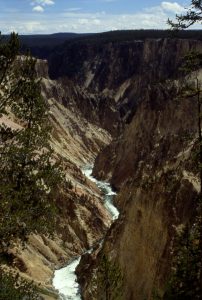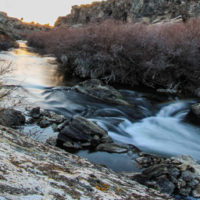U.S. National Parks Stressed
- NPG
- July 31, 2018
- NPG Commentary
- 0 Comments
Record Numbers of Americans Are Flocking to Our National Parks
Will Too Many Visitors Destroy Their Treasured Status?
It’s the height of summer. And countless millions of Americans are visiting, hiking, camping, boating and taking full advantage of the vast network of national parks that stretch across our great nation.
 With the economy on the upswing more people than ever are expected to travel and enjoy the natural beauty of celebrated locations ranging from the splendors of Yellowstone in the west, to the extensive waters of the Everglades in the south, to the refreshingly cool isolation of Acadia in the northeast, to the majesty of the Grand Canyon in the southwest.
With the economy on the upswing more people than ever are expected to travel and enjoy the natural beauty of celebrated locations ranging from the splendors of Yellowstone in the west, to the extensive waters of the Everglades in the south, to the refreshingly cool isolation of Acadia in the northeast, to the majesty of the Grand Canyon in the southwest.
And while it is a wonderful thing that more than 417 national parks sites have been set aside over the decades to preserve their unique natural state and extraordinary beauty, the “open door” to many of these over-visited locations may soon be a thing of the past. That’s because in many parks, both large and small, America’s ever-growing population is taxing them to the limit.
Millions of people…hundreds of thousands of vehicles…tons of trash… increasing need for sanitary services…it’s all adding up. And in many areas, it’s changing the unique experience a national park “getaway” once offered.
In an article in Utah’s Moab Sun News, entitled “Are we loving public lands to death?” author Sharon Sullivan recently wrote: “More than 300 million people visited the nation’s national parks last year and millions more visited state parks, wildlife refuges, and federally designated wilderness areas. Land managers say they welcome and want people to visit, enjoy, and cherish these special places — although managing the human impacts on these protected areas is a challenge — especially during an era of reduced federal funding.”
 Sullivan’s article highlighted one park, Arches National Park in Utah, which is visited by 1.6 million people each year. Problems that result from such activity include individuals going off trails and disturbing natural soil and plants, feeding wildlife, stacking rocks, and other negative impacts. She also notes that the U.S. Geological Survey has specialists in recreation ecology that investigate visitor impacts on protected areas and work closely with land managers to learn how to best accommodate the increased visitation. The good news is that, “The park service, the BLM, U.S. Fish and Wildlife Service, U.S. Forest Service, U.S. Army Corps of Engineers, and the Leave No Trace Center for Outdoor Ethics all use the science conducted by USGS to develop and communicate low-impact outdoor practices.” Yet, trying to keep ahead of the rising number of visitors is a huge challenge.
Sullivan’s article highlighted one park, Arches National Park in Utah, which is visited by 1.6 million people each year. Problems that result from such activity include individuals going off trails and disturbing natural soil and plants, feeding wildlife, stacking rocks, and other negative impacts. She also notes that the U.S. Geological Survey has specialists in recreation ecology that investigate visitor impacts on protected areas and work closely with land managers to learn how to best accommodate the increased visitation. The good news is that, “The park service, the BLM, U.S. Fish and Wildlife Service, U.S. Forest Service, U.S. Army Corps of Engineers, and the Leave No Trace Center for Outdoor Ethics all use the science conducted by USGS to develop and communicate low-impact outdoor practices.” Yet, trying to keep ahead of the rising number of visitors is a huge challenge.
Balancing the natural state of the parks with ever-increasing visitors also takes critical federal dollars. A recent article in Outsideonline.com highlights the fact that, “‘It does not look like Congress is going to allocate additional dollars for managing our public lands,’ says Holly Fretwell, a fellow with the Property and Environment Research Center, a free-market think tank. ‘That’s nothing new. It doesn’t matter what administration is in there – getting more dollars for public land management is not a high priority.’ Fretwell and her colleagues have advanced numerous ideas that would pay for parks independent of congressional funding, from national park franchises to higher fees, as [U.S. Secretary of the Interior] Zinke has suggested.”
In all, there are 417 National Park sites to visit in the U.S. They span more than 84 million acres, and all are overseen by the US National Park Service. While many Americans rush out West each year to visit the infamous Yellowstone or Yosemite National Park, or the Grand Canyon, it is interesting to note that the most popular of the country’s 60 headliner national parks is in the Southeast. Great Smokey Mountains National Park, covering more than a half-million acres, is split fairly evenly between the states of North Carolina and Tennessee. The park is home to flora and fauna found in both the northern and southern states. Northern animals and vegetation can be found at the park’s higher elevations, while their Southern counterparts are represented at the lower elevations.
At NPG, we constantly stress the dangers of population size and growth – and our overcrowded parks are a perfect example of the damage we do to our environment. If our nation’s leaders fail to act in the coming years to slow, halt, and eventually reverse immigration-driven population growth – our nation will pay a very dear price – including watching too many people overrun our nation’s greatest natural treasures, our beautiful and invaluable national parks.
Your gift helps publish and distribute materials like this.
NPG is recognized as a 501(c)(3) non-profit organization, and all contributions are tax-deductible to the extent the law allows.

